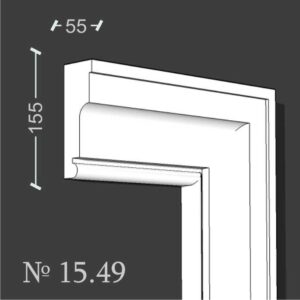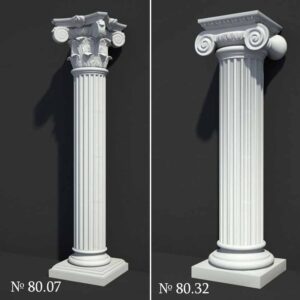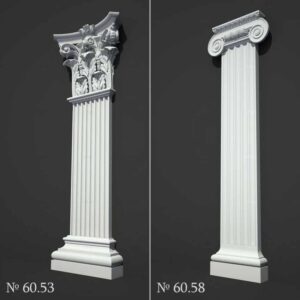In the ever-evolving world of design, architecture, and multimedia, understanding the factors that influence pricing in 3D rendering services prices is paramount. Grasping these nuances can save you time, money, and frustration. In this article, we will open the intricacies of 3D rendering pricing, breaking down the key factors that affect it and providing valuable insights for budget-conscious clients.
Understanding the Basics of 3D Rendering
Before we start with pricing factors, let’s quickly go through the basics. 3D rendering is a process that transforms two-dimensional models or designs into lifelike, three-dimensional images or animations. 3D rendering services employ specialized software to simulate lighting, textures, and shadows, creating visually stunning representations of objects, spaces, or concepts.
Significance in various industries
3D rendering services play a pivotal role across multiple industries. Architects and interior designers use it to showcase architectural concepts and interior designs. Product manufacturers employ it for product visualization and marketing. The gaming and entertainment industries rely on 3D rendering services for immersive experiences. Knowing the significance of 3D visualization in your specific field can help you appreciate its value and the importance of pricing considerations.
The Factors That Influence 3D Rendering Services Prices
Factor 1: Project Complexity
One of the most critical pricing factors for 3D rendering services is project complexity. The more intricate and detailed your project, the more time and effort it will demand from 3D rendering professionals. Complex designs, intricate textures, and tangled animations all require specialized skills and longer hours. As a result, pricing tends to rise in proportion to the complexity of the project.
Factor 2: Resolution and Quality
Resolution and quality choices can significantly affect 3D rendering services prices. Higher resolutions and superior quality come with higher costs. It’s essential to strike a balance between your desired level of detail and your budget constraints.
Consider your project’s intended use when deciding on resolution and quality. If it’s for a large print advertisement, you’ll want higher resolution and top-notch quality. However, if it’s for a website or social media, you may opt for a more budget-friendly compromise.
Factor 3: Software and Technology
The choice of software and technology employed in the rendering process is another significant pricing factor. High-end software and advanced hardware can produce stunning results but often come at a premium price. Additionally, rendering farms or cloud-based rendering services may incur additional costs.
In the 3D rendering services technology sphere, new software releases and hardware upgrades might enable faster rendering times and more cost-effective solutions. Being aware of these developments can help you make informed choices and potentially save money.
Factor 4: Project Timeline
Project timelines exert a substantial influence on 3D rendering services pricing. Tight deadlines often require rendering professionals to work overtime or allocate additional resources to meet the client’s expectations. Rushed projects can result in higher costs due to the urgency involved.
To mitigate the impact of tight timelines on pricing, consider planning ahead. Give rendering professionals ample time to work on your project, and you may be able to negotiate a more favorable rate. Effective communication and collaboration are key to managing timelines and costs efficiently.
Factor 5: Customization and Special Features
Customization and special features can significantly impact pricing. If your project requires unique textures, complex animations, or specialized effects, expect costs to rise accordingly. Specialized features often demand additional time and expertise.
To keep customization costs in check, collaborate closely with the rendering professionals. Clearly communicate your vision, objectives, and any specific requirements from the outset. Efficient communication can minimize revisions and costly adjustments down the road.
Negotiating Pricing for 3D Rendering Services
Negotiating pricing with 3D rendering studios can be a valuable skill. Start by understanding your project’s requirements and limitations, and be prepared to discuss the key factors that affect pricing. Don’t hesitate to ask for multiple quotes or explore package deals that suit your needs.
Clear communication is essential in pricing discussions with your chosen 3D rendering studio. Establish a transparent dialogue with their rendering professionals, ensuring they understand your vision, budget constraints, and timelines. A collaborative approach can lead to mutually beneficial agreements and cost savings.
Tips for Budget-Friendly 3D Rendering
If you’re working with a tight budget, there are several strategies you can employ:
- – Prioritize project elements: Focus on the most critical aspects of your project and allocate resources accordingly.
- – Consider alternative rendering options: Explore cost-effective software, freelance professionals, or online rendering platforms.
- – Optimize your project timeline: Give rendering professionals ample time to avoid rush charges.
The balance between quality and cost plays a crucial role in 3D visualization. It’s tempting to opt for the highest quality, but it may not always be necessary. Assess your project’s intended use and target audience, and adjust your quality requirements accordingly. Remember that a well-executed project within budget constraints can be just as effective. Another important aspect to consider when evaluating prices with a 3D rendering studio is conducting a thorough review of their portfolio. One of the most common misconceptions is that a higher price tag guarantees the best quality. However, reality often tells a different story. By carefully examining a company’s portfolio, you can gain invaluable insights into the quality and consistency of their work. It allows you to see real-world examples of their capabilities and judge whether they align with your vision and expectations. Remember, excellence in 3D rendering isn’t solely determined by the price; it’s the blend of talent, experience, and a track record of delivering outstanding results that truly matters.
Conclusion
Understanding the intricacies of 3D rendering pricing is essential for anyone seeking these services. Key factors include project complexity, resolution and quality, software and technology, project timeline, and customization. These factors interact and influence pricing decisions, making it crucial to navigate them wisely.
In conclusion, pricing in 3D rendering is not a one-size-fits-all equation. By comprehending the factors that drive costs and employing effective negotiation and budget-friendly strategies, you can make informed decisions that align with your vision and budget. Whether you’re a creative professional or a business owner, the ability to navigate 3D rendering pricing ensures you get the best value for your investment. So, go forth with confidence, and turn your 3D rendering projects into visual masterpieces without breaking the bank.













